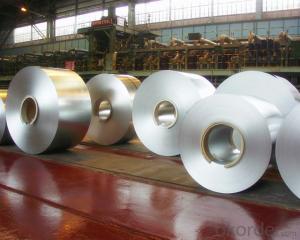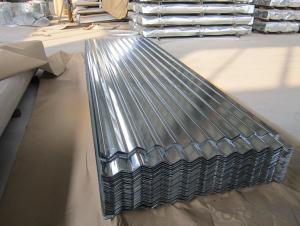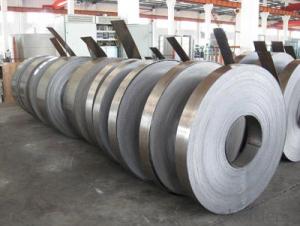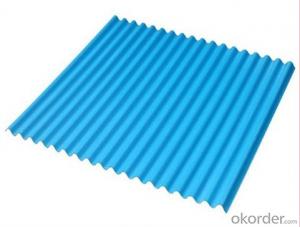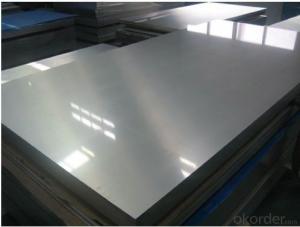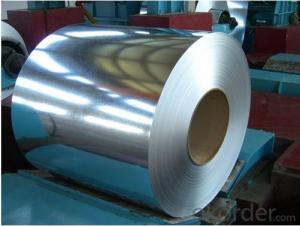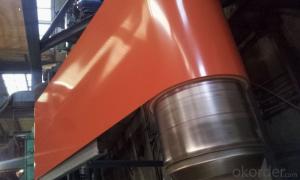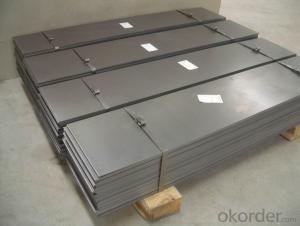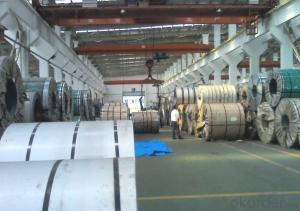GI/CGI/SGCC Galvanized Steel Sheet In Coil
- Loading Port:
- Qingdao
- Payment Terms:
- TT OR LC
- Min Order Qty:
- 25 m.t.
- Supply Capability:
- 10000 m.t./month
OKorder Service Pledge
OKorder Financial Service
You Might Also Like
GI/CGI/SGCC Galvanized Steel Sheet In Coil
1.Structure of GI/CGI/SGCC Galvanized Steel Sheet In Coil
GI/CGI/SGCC Galvanized Steel Sheet In Coil is widely used in the construction industry, as raw material for the production of corrugated panels, fencing products, drywall panel profiles, ventilation systems etc. Recommended for both outside and inside usage, galvanized steel has a high resistance to corrosion in different environments, due to a protective layer of zinc of 100 – 180 grams per square metre.
Hot-dip galvanized steel coils are produced by immersing steel in a zinc bath. An appropriate galvanizing process requires a pretreatment process during which the steel passes through different baths which prepare the surface for zinc coating. In this stage, chemicals are used to clean the surface of the steel. After the chemical treatment, the steel coils pass through a bath of melted zinc at temperatures around 460 ° C. The resulting uniform coating is finished through a process of skin-passing to provide smooth and shiny appearance of the finished product. To store for a longer period, the hot-dip galvanized coils can be delivered with a final oil coating, according to the customer’s demand.
2.Main Features of GI/CGI/SGCC Galvanized Steel Sheet In Coil.
1) Rust-proof
2) Water-proof
3)Durable using
3. GI/CGI/SGCC Galvanized Steel Sheet In Coil Images

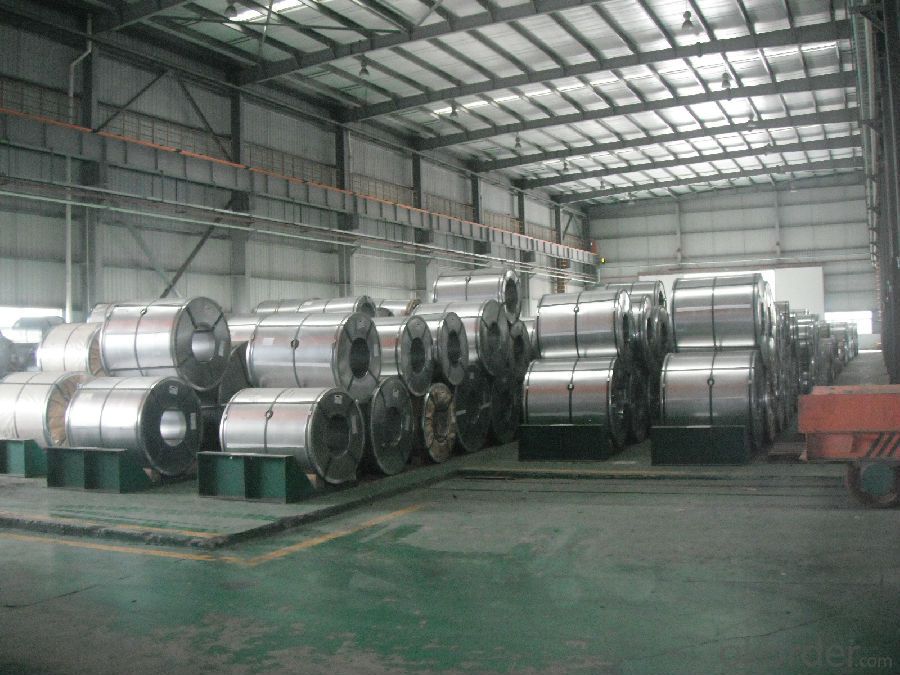
4. GI/CGI/SGCC Galvanized Steel Sheet In Coil Specification
1)Based raw material: Hot rolled steel coils or Cold rolled steel coils
2) Thickness
3) Width
4)Coating mass
5) Spangle
6)Surface treatment
7)Coil inner diameter
8)Painting kind
9)Painting color
10)Painting thickness
5.FAQ of GI/CGI/SGCC Galvanized Steel Sheet In Coil
We have organized several common questions for our clients,may help you sincerely:
①How about your company?
A world class manufacturer & supplier of castings forging in carbon steel and alloy steel,is one of the large-scale professional investment casting production bases in China,consisting of both casting foundry forging and machining factory. Annually more than 8000 tons Precision casting and forging parts are exported to markets in Europe,America and Japan. OEM casting and forging service available according to customer’s requirements.
②How to guarantee the quality of the products?
We have established the international advanced quality management system,every link from raw material to final product we have strict quality test;We resolutely put an end to unqualified products flowing into the market. At the same time, we will provide necessary follow-up service assurance.
③Could I have your Processing technique introduction?
Processing technique:
| adopt wide hot galvanized strip produced by famous company as Bao Steel which has even thickness |
| we introduce a new complete set of cutting technology |
| keep steady precision |
| reduce waste of material farthest |
| adopt physical technique in order to make the galvanized level thicker |
| enhance the rustproof capability |
| adopt non-chrome passivation technique |
| protect the environment against pollution |
| adopt level pressure technique and inert gases protect technique |
| make the galvanized level brighter |
| delay oxidation phenomenon in natural environment |
- Q:Can steel strips be used in the food industry?
- Yes, steel strips can be used in the food industry. They are commonly used for various purposes such as food processing, packaging, and storage due to their durability, corrosion resistance, and ease of cleaning.
- Q:How do steel strips contribute to weight reduction in various applications?
- Weight reduction in various applications can be achieved through the utilization of steel strips. The unique properties and manufacturing processes of these strips allow for this contribution. Primarily, steel strips possess a remarkable strength-to-weight ratio, ensuring exceptional durability and strength while remaining relatively lightweight. This quality renders them ideal for industries such as automotive, aerospace, and construction, where weight reduction is imperative. By substituting heavier materials with steel strips, manufacturers can achieve substantial weight savings without compromising the structural integrity of their products. Additionally, steel strips can be manufactured in thin gauges, enabling the production of lighter and more flexible components. These slender strips can be effortlessly molded, bent, or shaped into intricate designs, providing engineers with enhanced design flexibility. This adaptability in design facilitates the optimization of weight and performance, thereby resulting in more efficient and lighter structures. Furthermore, steel strips can undergo advanced manufacturing techniques to further minimize weight. For instance, cold-rolling or hot-rolling can be employed to attain varying levels of thickness and strength. Particularly, cold-rolling significantly reduces strip thickness while upholding mechanical strength. This decrease in thickness translates to weight reduction without compromising desired strength properties. Moreover, steel strips can benefit from advanced surface technologies, such as coatings or treatments, to enhance corrosion resistance. The integration of corrosion-resistant steel strips eliminates the need for additional protective coatings or treatments, ultimately reducing the overall weight of the final product. In summary, steel strips contribute to weight reduction in diverse applications by offering a high strength-to-weight ratio, design flexibility, and the ability to undergo advanced manufacturing techniques. Combined with their corrosion resistance, these properties make steel strips an appealing option for industries seeking to reduce weight while preserving structural integrity and performance.
- Q:How are steel strips tempered for improved toughness?
- Steel strips are tempered for improved toughness by heating them to a specific temperature and then cooling them rapidly. This process, known as quenching, helps to reduce the hardness of the steel while increasing its toughness and durability.
- Q:What are the dimensions of a typical steel strip?
- The dimensions of a typical steel strip can vary depending on its intended application and industry standards. However, common dimensions for steel strips range from 0.5 inches to 12 inches in width and 0.005 inches to 0.25 inches in thickness. The length of a steel strip is typically determined by the coil it is supplied in, which can vary from several hundred to several thousand feet long. It is important to note that these dimensions are general guidelines and may vary based on specific requirements and manufacturing processes for different applications.
- Q:What is the typical hardness range for steel strips?
- The typical hardness range for steel strips varies depending on the specific type and application, but it generally falls between 20 and 60 on the Rockwell C scale.
- Q:What are the common challenges in manufacturing steel strips?
- Some common challenges in manufacturing steel strips include ensuring consistent thickness and width throughout the strip, preventing surface defects such as scale and scratches, maintaining proper flatness and straightness, achieving desired mechanical properties, and managing temperature control during the manufacturing process. Additionally, quality control and ensuring compliance with industry standards and customer specifications are also important challenges in steel strip manufacturing.
- Q:How are steel strips tested for cleanliness?
- To guarantee compliance with the necessary standards, different techniques are employed to examine the cleanliness of steel strips. Among these methods, visual inspection is commonly used, wherein trained professionals visually scrutinize the steel strip's surface to identify any visible indications of dirt, oil, rust, or other impurities. This examination is conducted under sufficient lighting conditions to ensure precise detection. Aside from visual inspection, alternative approaches are utilized to assess the cleanliness of steel strips. One such technique involves the utilization of solvents or detergents for cleansing purposes. Specific solvents or detergents are employed to eliminate any surface contaminants present on the steel strips. Following the cleaning process, the strips are thoroughly rinsed to eliminate any remaining cleaning agents. An additional method to test the cleanliness of steel strips is through the use of a surface analyzer. This device is capable of detecting and quantifying the presence of contaminants on the surface of the steel strip. It can evaluate parameters like oil, grease, or particulate matter, providing a quantitative assessment of cleanliness. Furthermore, steel strips can also undergo laboratory analysis for cleanliness testing. This process entails extracting samples from the strips and subjecting them to various tests, such as chemical analysis or microscopy. These tests are effective in identifying and measuring specific contaminants that may be present on the surface of the steel strips. In conclusion, the cleanliness of steel strips plays a crucial role in ensuring their quality and performance. By employing diverse testing methods, such as visual inspection, solvent or detergent wash, surface analysis, and laboratory analysis, manufacturers can ensure that the steel strips satisfy the required cleanliness standards necessary to meet the demands of various industries.
- Q:How are steel strips produced?
- Steel strips are produced through a process called hot rolling, where a steel slab is heated and then passed through a series of rolling mills to reduce its thickness and shape it into a strip.
- Q:What is the maximum thickness of steel strips?
- Several factors, including the type of steel and the manufacturing process, can affect the maximum thickness of steel strips. Typically, steel strips can have a thickness ranging from 0.001 inches (0.0254 mm) to over 1 inch (25.4 mm) in specialized cases. However, it is important to consider practical limitations, such as the available equipment and intended use, when determining the maximum thickness. To determine the appropriate maximum thickness for a specific steel strip application, it is advisable to consult steel manufacturers or industry guidelines.
- Q:How are steel strips used in the construction industry?
- Steel strips are commonly used in the construction industry for various purposes, such as reinforcing concrete structures, creating support beams, and providing stability to large-scale infrastructure projects. They are also used for cladding, roofing, and as a structural component in the construction of buildings, bridges, and highways. Overall, steel strips play a crucial role in enhancing the strength, durability, and overall structural integrity of construction projects.
1. Manufacturer Overview |
|
|---|---|
| Location | |
| Year Established | |
| Annual Output Value | |
| Main Markets | |
| Company Certifications | |
2. Manufacturer Certificates |
|
|---|---|
| a) Certification Name | |
| Range | |
| Reference | |
| Validity Period | |
3. Manufacturer Capability |
|
|---|---|
| a)Trade Capacity | |
| Nearest Port | |
| Export Percentage | |
| No.of Employees in Trade Department | |
| Language Spoken: | |
| b)Factory Information | |
| Factory Size: | |
| No. of Production Lines | |
| Contract Manufacturing | |
| Product Price Range | |
Send your message to us
GI/CGI/SGCC Galvanized Steel Sheet In Coil
- Loading Port:
- Qingdao
- Payment Terms:
- TT OR LC
- Min Order Qty:
- 25 m.t.
- Supply Capability:
- 10000 m.t./month
OKorder Service Pledge
OKorder Financial Service
Similar products
New products
Hot products
Hot Searches
Related keywords

